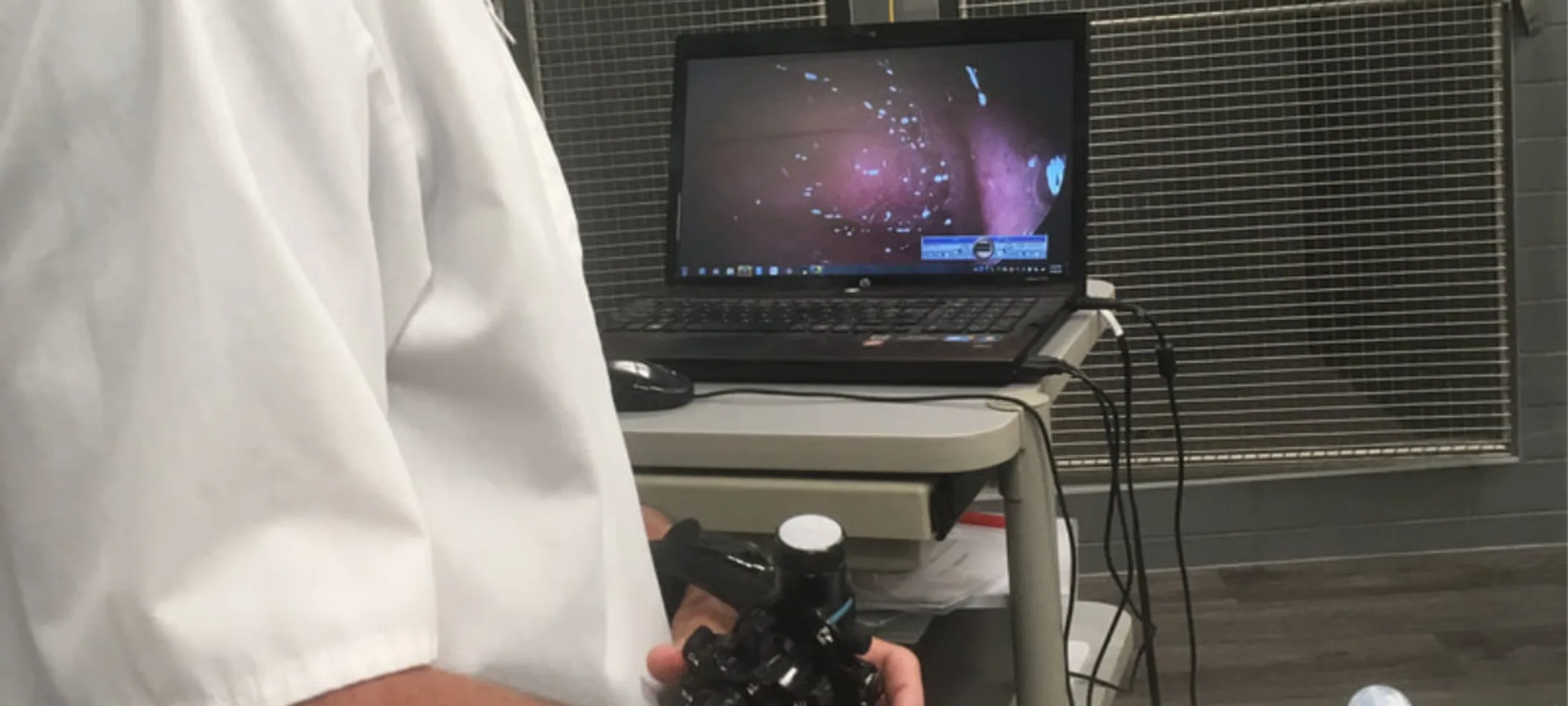Fairfield Animal Hospital
Endoscopy
An endoscopy is a highly useful medical imaging tool used to examine your pet without actually examining an internal organ or obtaining a biopsy.

Overview
An endoscopy is a highly useful medical imaging tool used to examine your pet without actually examining an internal organ or obtaining a biopsy. To perform an endoscopy, your veterinarian uses a thin tubular instrument with a small camera on the end – called an endoscope – and inserts it into an opening of the body.
Why would my pet need an endoscopy?
An endoscopy is a highly useful medical imaging tool used to examine your pet when they are experiencing symptoms such as weight loss, vomiting, or diarrhea. With endoscopic equipment, your veterinarian can examine different internal organs like the lungs (bronchoscopy), the colon (colonoscopy), and the bladder (cystoscopy). For your pets, the endoscopy can provide a minimally invasive way for your vet to diagnose gastrointestinal conditions and cancer, or in some cases, it can also be used therapeutically for an interventional endoscopy.
When is an endoscopy appropriate?
An endoscopy is a highly useful medical imaging tool used to examine your pet less invasively. An endoscopy is usually recommended when our doctors find abnormalities on bloodwork or X-rays and need to confirm a diagnosis. It can also be used for therapeutic purposes, which is termed an interventional endoscopy.
How is an endoscopy used?
An endoscopy is performed with either a flexible endoscope (bronchoscopy, colonoscopy, or endoscopy) or with a rigid endoscope (arthroscopy, cystoscopy, laparoscopy, proctoscopy, rhinoscopy, or thoracoscopy). The machine is made up of a tube that enters the body, an eyepiece, and a control section for the doctor to maneuver the equipment. Additionally, there are two channels within the endoscope. One channel can be used for various endoscopic tools to collect fluids or samples, and the other allows air or water to pass through. Special video cameras can also be attached that allow viewing of the procedure on a screen or recording a video of the procedure.
Endoscopies performed on humans only require light sedation, however, because animals don’t understand that a veterinary team is trying to help them, they will need to be sedated under general anesthesia for the duration of the procedure.
Endoscopy With Fairfield Animal Hospital
This is a non-invasive medical tool we use to diagnose intestinal and airway conditions such as foreign bodies, inflammatory bowel disease, cancer, and various other conditions. Endoscopy was designed to help minimize trauma and meet the increasing demand for minimally invasive surgical techniques, an increasingly popular option that offers lower costs as endoscopes become standard equipment in everyday small animal practice. Endoscopy allows us to see the inside of the body without making any surgical incisions. A long, flexible tube with a camera at one end is inserted into the area of interest. Images are then projected onto a TV monitor. A biopsy channel in the scope allows us to insert instruments for a variety of procedures including cytology, culture, biopsy, and foreign body retrieval. With endoscopy, we can often obtain a diagnosis without the need for more invasive surgery. Animals are often released on the same day and need little or no pain medication. We are able to utilize our scope in the nose, esophagus, trachea and bronchi, stomach, small intestine, and colon. Dr. Stephen Ganton has extensive experience with endoscopic procedures. We have had many interesting cases from removing foreign objects to diagnosing complicated respiratory cases. We have a wide variety of both flexible and rigid scopes. We are able to take biopsy samples from the esophagus, stomach, lungs, and colon.
All diagnostic reports are phoned to the referring veterinarian on the same day, as well as a written report will be faxed to their office within 24 hours.
All endoscopic procedures are available by appointment or on an emergency basis.
